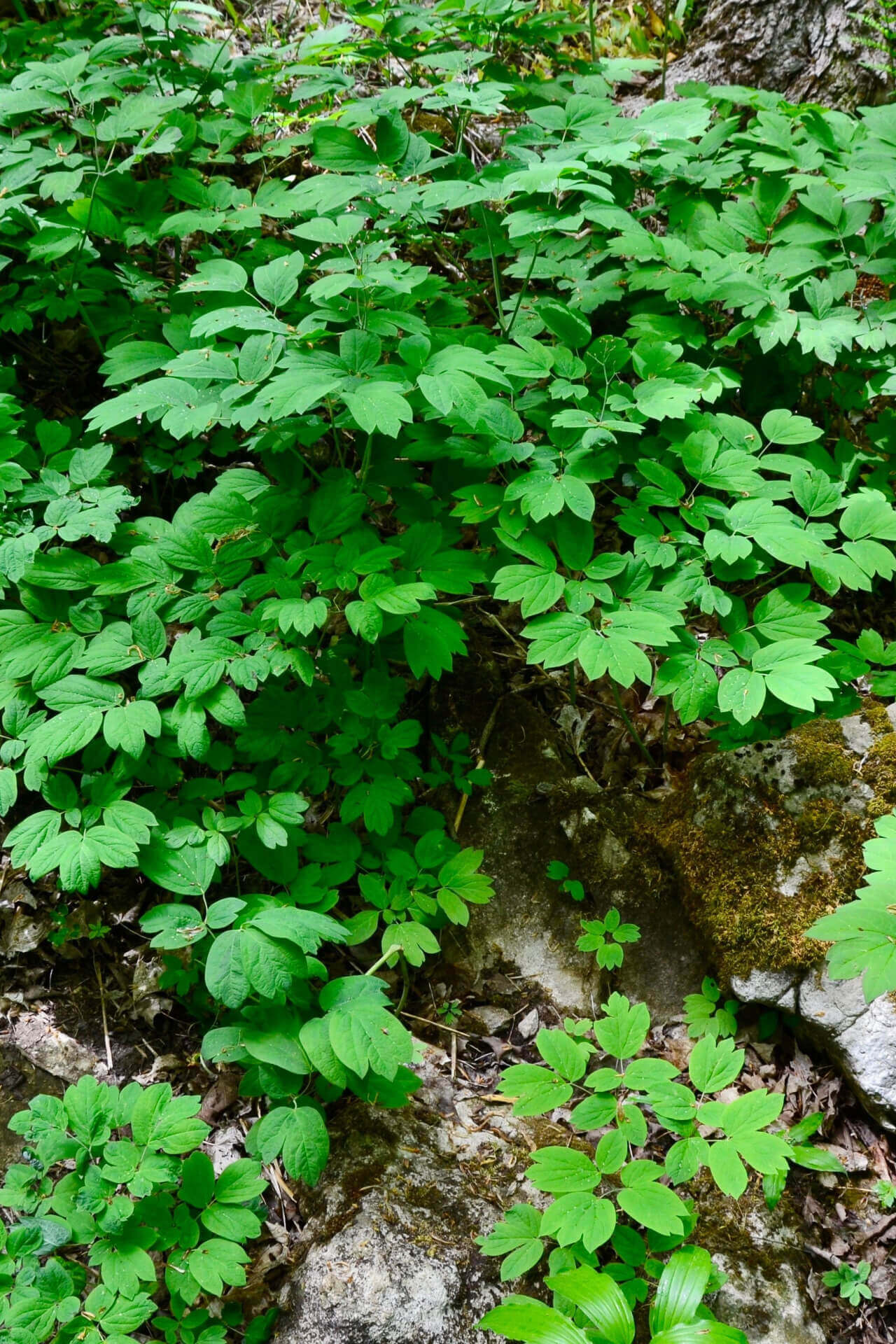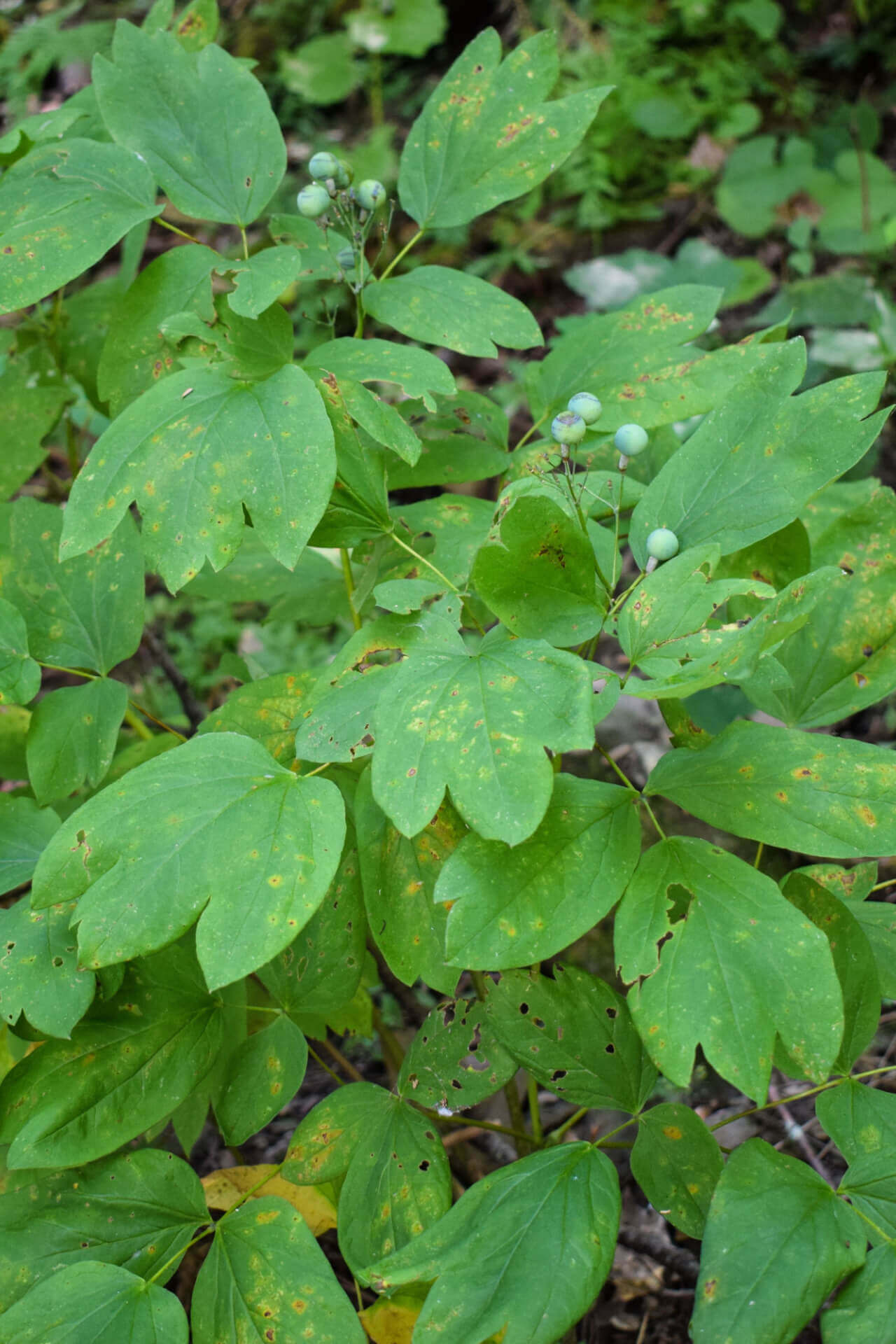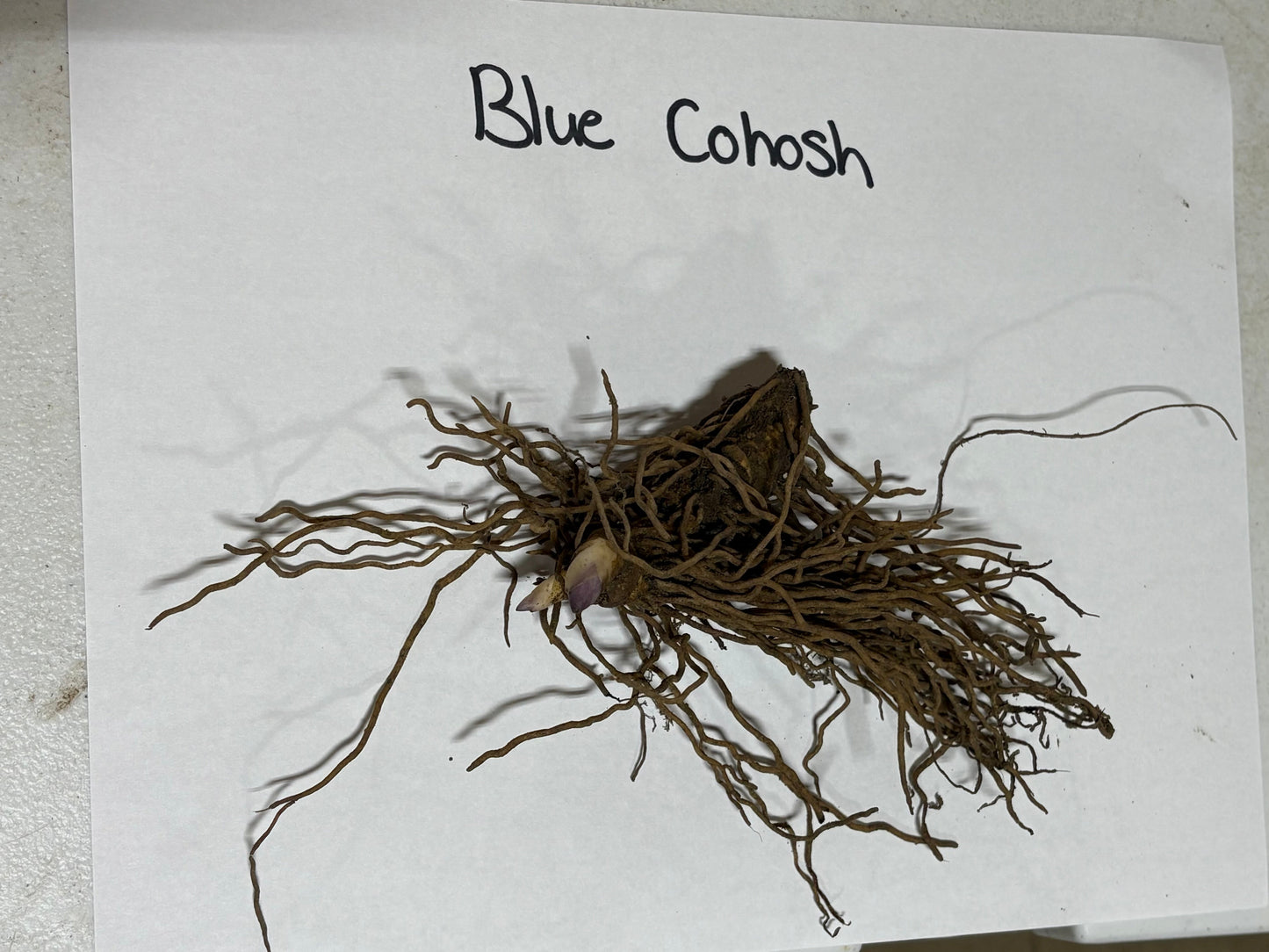Blue Cohosh
Couldn't load pickup availability
Ships 10-12 Days
Over 12"
Full Shade
4-9
Flowering
Bare-root
Caulophyllum thalictroides - Blue Cohosh
Blue Cohosh is a herbaceous perennial plant native to eastern North America. It typically grows to a height of 2-3 feet (60-90 cm) and spreads to a width of 1-2 feet (30-60 cm). The plant has large, compound leaves resembling the buttercup family. The leaves are bluish-green and are arranged in an alternating pattern on the stem.
Flowers and Usage
In the spring, it produces small, greenish-yellow flowers that grow in clusters on long stalks. The flowers are followed by berry-like fruits that ripen in the summer. The plant's thick and fleshy roots are used in herbal medicine.
This plant prefers moist, shady conditions and often grows in woodland areas, streams, and damp meadows. It is an essential plant in traditional Native American medicine used to treat various ailments, including menstrual cramps, labor pains, and rheumatism.
If your income is increasing primarily in the Eastern U.S., with plenty of rain, If you need plenty of ground cover in your backyard and are tired of wrestling with flowers that require a lot of maintenance, it may be just the ticket you are looking for.
Blue Cohosh's Stunning Foliage
Known for their bushy, tulip-shaped foliage and bright, blue-berry-appearing berries, those in zones 3 through 8 are an obvious choice for those looking for an attractive hedge or hedges throughout their garden.
Where To Plant
It is a straightforward plant that forms colonies, rising between 1 foot to 3 feet tall. If you plant them near one another, they will self-pollinate one another. It does best in clay or loam soils that are moist but well-drained. The berries will bloom in April and May as green flowers, followed shortly after that by several berries.
Requirements
Plant in partially shaded areas, as they do not do well in steady sunshine. It needs only an average amount of water and works well with Acid or Neutral soils. It requires very little maintenance, and it only takes the plants about 1 season to reach maturity for landscaping purposes.
They are perfect. Although difficult to establish in seed form, the logical step is to buy them in root form in the fall. If you cover the soil with an overcoat of leaves in the spring, these beauties will soon sprout and do well in your garden.
This Is How Your Plants Will Look upon Delivery
Bloom/Foliage Color
Yellow
Shipping date depends on the date displayed and chosen when you order from the product's page.
We do not offer warranties on products after 5 days past receiving your plants.




The plants arrived in great shape and ready to plant. Instructions for planting were clear and concise. Can't wait to see how they bloom next year.
I love the plants thank you I appreciate that.

